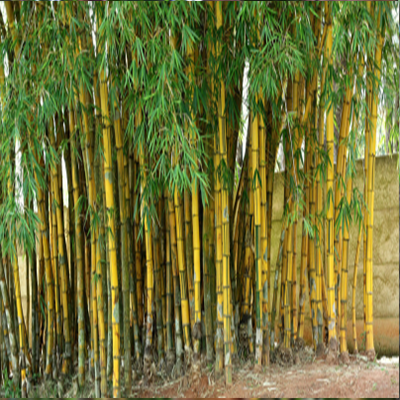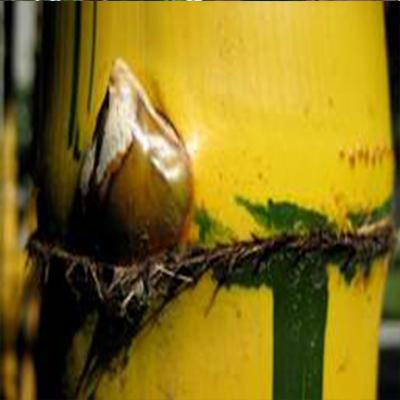08. Bambusa vulgaris Schrad (yellow)
Local names
English: Common bamboo,
Yellow bamboo,
Golden bamboo
General description
Bambusa vulgaris forms moderately loose clumps and has no thorns. It has lemon-yellow culms (stems) with green stripes and dark green leaves. Stems are not straight, not easy to split, inflexible, thick-walled, and initially strong. The densely tufted culms grow 10–20 m (30–70 ft) high and 4–10 cm (2–4 in) thick. Culms are basally straight or flexuose (bent alternately in different directions), drooping at the tips. Culm walls are slightly thick. Several branches develop from mid-culm nodes and above. Flowering is not common, and there are no seeds. Fruits are rare due to low pollen viability. It is a preferred species for erosion control. It grows best under humid conditions, but can tolerate unfavorable conditions like low temperatures and drought.
Habit and Habitat
Tree form. B. vulgaris grows mostly on river banks, road sides, wastelands, and open ground, generally in the low altitudes.
Distribution
It is native to Indochina and to the province of Yunnan in southern China, but it has been widely cultivated in many other places and has become naturalized in several regions.
Uses
The stems used as fuel and the leaves used as fodder, though a large amount of ingestion of leaves is known to cause neurological disorder among horses.The worldwide production and trade of B. vulgaris is considerable, though no statistics are available. It also has some disadvantages. Working and machining properties of the stems are poor, as they are not straight, not easy to split, and not flexible, but they are thick-walled and initially strong. Because of high carbohydrate content, stems are susceptible to attacks from fungi and insects such as powderpost beetles. Protection from biological threats is essential for long-term use.


